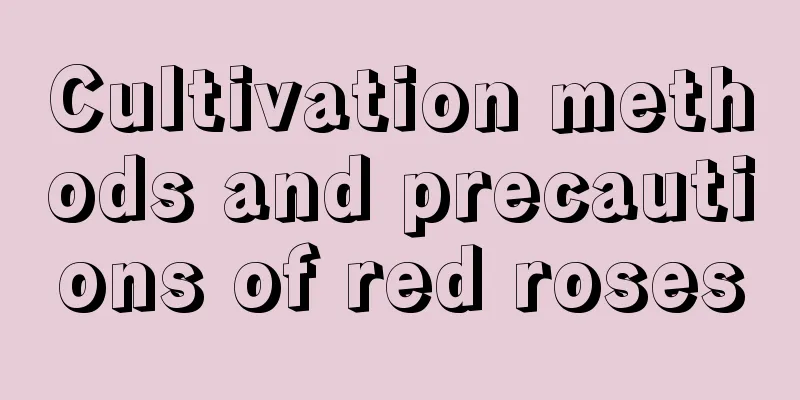How to propagate Begonia and what to pay attention to

Begonia propagation methodThe commonly used propagation methods of Begonia are sowing propagation and cutting propagation. Its seeds can be propagated, and sowing propagation is the natural reproduction method. Generally speaking, cutting propagation is the fastest. Begonia breeding timeThe survival rate of Begonia is high in autumn. The temperature at this time is neither high nor low, the plant grows slowly, and the damage to the roots is small, so the survival rate is higher. Begonia propagation methodPropagation of Begonia by divisionBegonias that have grown for many years have become old plants and can be divided. This can be done at the same time as pruning, which can also allow side branches to grow better and form a more perfect plant shape. Begonia cutting propagationBegonia can be propagated by cuttings at any time, as long as the temperature is around 20 degrees. Choose strong, budless branches that are 5-6 cm in length, each with at least two buds, and then insert them into clean river sand, not too deep. Seed propagation of BegoniaBefore sowing begonias, first fill the pot with fine mud, then sprinkle the seeds evenly, use the water-absorbing method at the bottom of the pot to absorb enough water into the seeding pot, then cover the pot with a piece of glass, and finally place it in a semi-shaded place. It will germinate in about 10 days. Four Seasons Begonia Leaf Cutting PropagationBegonia is often propagated by leaf cuttings. You can trim the thick and strong leaves at the bottom, cut off half of the petiole, put it in a plastic bag for 5-10 minutes, and then insert it obliquely into slightly moist, clean sandy soil. Maintain a high air humidity, a warm environment, and keep it ventilated, so that it has a chance to take root and sprout. Precautions for breeding Begonia1. Soil requirements: Begonia likes fertile and loose soil. Use a mixture of snake wood chips, leaf mold and river sand. Begonia cannot grow in hot places, so it needs to be placed in a cool place for summer cultivation. 2. Temperature requirements: Begonia cannot grow in a cold environment, so the flowers must be transplanted indoors for maintenance before the frost. They need to be kept warm and not allowed to freeze. If the indoor temperature can be maintained above 15 degrees, the flowers will continue to bloom. 3. Watering requirements: Water the Begonia in the morning or evening in summer and around noon in winter. Do not water too much and be sure not to allow water to accumulate in the soil. Too much water will cause the roots to rot and the leaves to turn yellow. 4. Light requirements: Begonia likes a sunny environment and needs to be kept in a place with good light. It also needs ventilation and air permeability. If there is not enough light, it will not grow well and the color of the flowers will become dull. |
<<: How to propagate golden edge agave and precautions
>>: What kind of fertilizer is good for peony base fertilizer (base fertilizer application method)
Recommend
What to do if the roots rot in Frost Morning
Causes of frost morning root rot Excessive water ...
How to propagate forsythia and what to pay attention to
How to propagate jasmine When propagating Forsyth...
What is the best month to plant winged beans?
When to plant winged beans Winged beans are usual...
How long is the growing season for spring corn?
How long is the growing season for spring corn? T...
How to care for the cabbage succulent so that it grows quickly into a short and thick pile and looks good
Cabbage-like succulents are also called wrinkled-...
What flowers are suitable for growing in Lijiang? What are the city flowers and trees?
1. Climate characteristics of Lijiang Lijiang has...
Southern ginger planting time and method
Southern ginger planting time When planting south...
Methods and techniques for growing peppers
1. Planting time When planting peppers, there are...
Do you need to trim the leaves of white palm?
1. Do you need to trim the leaves? During the gro...
Lotus effect and function, can lotus be eaten?
1. Efficacy and Function 1. Nutritional supplemen...
Differences between mulberry and mulberry
1. Difference of blades The leaves of the Chinese...
What to do if gardenia has whiteflies
1. Introduction to pests This is a worldwide pest...
How to prune and top bitter melon and pruning methods
Bitter melon pruning time Bitter melon can be pru...
Can the yellowing leaves of the golden diamond be cut off?
1. Can be trimmed When the leaves of the golden d...
What is water shield?
What is water shield? Water shield is an aquatic ...









